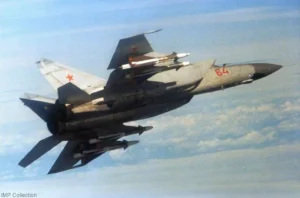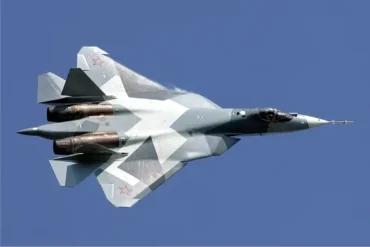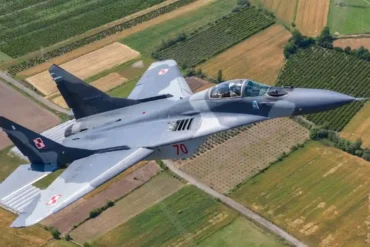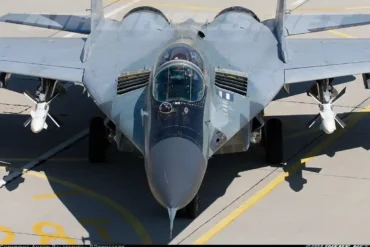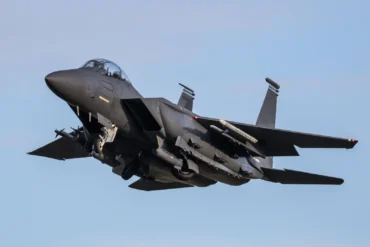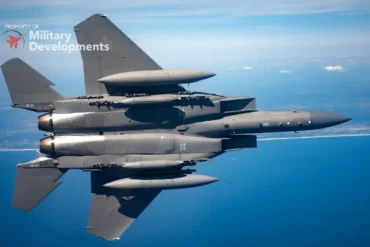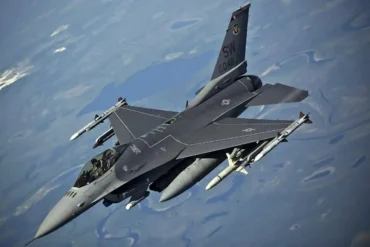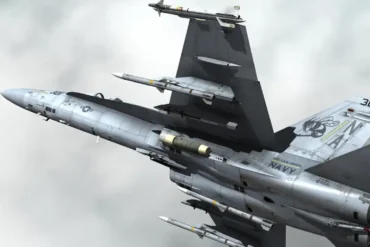The MiG-25, one of the Soviet Union’s most legendary fighter aircraft, was designed for high-speed interception and reconnaissance. In this article, we will explore the armament of the MiG-25, focusing on its missile capabilities, which were integral to its formidable performance in both air-to-air combat and ground attacks. The MiG-25P and MiG-25PD variants, equipped with a range of advanced missiles, formed a significant part of the Soviet air defense system during the Cold War and continue to be a topic of interest among military aviation enthusiasts today.
The MiG-25: A Brief Overview
Before delving into its missile armament, it’s essential to understand the overall design and capabilities of the MiG-25. The MiG-25, developed by the Mikoyan design bureau in the 1960s, was intended to counter the growing threat of high-altitude bombers and reconnaissance aircraft from NATO. With a top speed of Mach 2.83 and the ability to reach altitudes exceeding 80,000 feet, the MiG-25 was one of the fastest aircraft in the world at the time of its introduction.
The aircraft’s primary purpose was interception, with the MiG-25P being the primary fighter version and the MiG-25PD featuring improved avionics and weapon systems for greater versatility. The MiG-25 could carry a range of air-to-air and air-to-ground missiles, but it was the air-to-air missile capability that truly defined the aircraft’s combat effectiveness.
Missile Capabilities of the MiG-25P / MiG-25PD
The MiG-25P and its upgraded version, the MiG-25PD, were equipped with some of the most powerful and sophisticated missile systems of their time. These missiles gave the MiG-25 a distinct edge in both short-range dogfights and long-range engagements, allowing it to effectively counter a wide range of threats. Below is a detailed look at the various missiles that equipped these aircraft.
R-40R/T Air-to-Air Missiles
The R-40R (also known as the AA-6 ‘Apex’ in NATO parlance) was one of the primary long-range air-to-air missiles carried by the MiG-25. Designed for high-altitude interception, the R-40R had a range of up to 80 kilometers, depending on the engagement conditions. It was specifically intended for use against high-speed, high-altitude targets like bombers and reconnaissance aircraft, making it an ideal weapon for the MiG-25’s role as an interceptor.
- Guidance: The R-40R was equipped with an active radar homing system, allowing for autonomous target acquisition and tracking.
- Warhead: It carried a 60-kg high-explosive fragmentation warhead, designed to destroy large aircraft upon impact.
- Launch Overload: Capable of withstanding 8 g launch overload, the R-40R was suitable for high-speed, high-altitude operations, where the MiG-25’s superior speed and altitude capabilities allowed it to engage targets at a distance before closing in for the kill.
The R-40T, a variant of the R-40, featured infrared homing for target tracking. It provided a passive targeting option, making it effective against targets that might attempt to deceive radar-guided missiles through electronic countermeasures.
R-40RD/TD Air-to-Air Missiles (MiG-25PD)
The R-40RD and R-40TD missiles were variants of the R-40, optimized for longer-range engagements and enhanced performance. The MiG-25PD, an upgraded version of the original MiG-25P, was equipped with these advanced versions of the R-40, significantly improving its ability to engage high-altitude, high-speed targets.
- Improved Range: The R-40RD/TD offered extended range compared to the standard R-40, allowing the MiG-25PD to engage targets from even greater distances, effectively intercepting hostile aircraft well before they could enter MiG-25 intercept zones.
- Guidance: Like the R-40R/T, the R-40RD featured both radar and infrared homing capabilities, offering versatility in different combat scenarios.
- Launch Overload: With a launch overload capability of 8 g, the R-40RD/TD was designed for maximum operational performance at high speeds and altitudes, ensuring that the MiG-25PD could operate effectively in a variety of air combat situations.
These missiles were particularly valuable in scenarios where a fast, long-range interception was necessary, and the improved guidance systems ensured greater accuracy and lethality in engagement.
R-60/R-60M Dogfight Missiles (MiG-25PD)
In addition to long-range missiles, the MiG-25PD also carried the R-60 (AA-8 ‘Aphid’) series of short-range, infrared-guided air-to-air missiles, which were highly effective in close-quarters combat, or “dogfights.” The R-60 was designed for engagement at ranges of 3 to 8 kilometers, ideal for high-speed, high-maneuverability combat situations.
- Guidance: The R-60 utilized infrared homing for target acquisition, allowing it to lock onto heat signatures from enemy aircraft. The missile’s seeker was highly sensitive and effective against a variety of aircraft types, including fighter jets and bombers.
- Warhead: The R-60 carried a 3.5-kg high-explosive warhead, designed to incapacitate or destroy smaller, agile aircraft with a direct hit.
- Variants: The R-60M was an improved version of the R-60, with enhancements to the seeker head and a larger warhead for better lethality in combat. The R-60M also had improved resistance to countermeasures, making it more effective against aircraft employing electronic warfare tactics.
These missiles were an essential part of the MiG-25PD’s armament, as they provided a countermeasure to enemy fighters that might close in at low altitude, where the MiG-25’s long-range missiles would be less effective.
Combination of R-60/R-60M and R-40RD/TD (MiG-25PD)
In the MiG-25PD configuration, the aircraft could carry a combination of both short-range R-60/R-60M missiles and long-range R-40RD/TD missiles, optimizing its capabilities for a wide range of combat scenarios. This flexibility allowed the MiG-25PD to engage both high-altitude targets at long range and maneuverable enemy fighters at closer distances.
- Strategic Advantage: The ability to carry both types of missiles allowed the MiG-25PD to maintain an overwhelming presence in the sky, with no need to engage in close combat unless absolutely necessary. The longer-range missiles could engage high-value targets such as bombers or reconnaissance planes, while the shorter-range missiles could be deployed in case of an enemy fighter getting too close.
Performance and Missile Delivery
The MiG-25’s performance characteristics were ideally suited to launching missiles effectively. With a maximum speed of Mach 2.83 and a service ceiling of up to 80,000 feet, the MiG-25 was capable of intercepting targets at long distances and high altitudes before engaging them with its missiles. The aircraft’s incredible climb rate of 40,900 feet per minute allowed it to quickly reach combat altitude, while its high-speed capabilities allowed it to close the distance rapidly once a target was locked.
Missiles such as the R-40R/T and R-60 series could be fired while the MiG-25 was performing evasive maneuvers or high-speed turns, taking full advantage of the aircraft’s agility and missile overload tolerance. With an 8 g launch overload capacity, the MiG-25 was capable of launching missiles at high speeds and through intense maneuvering without risking missile failure or loss of control.
The Legacy of MiG-25 Missiles
The armament of the MiG-25, particularly its missiles, represents a pivotal chapter in the history of air combat. The MiG-25’s missile system, featuring long-range radar-guided missiles and short-range infrared-guided missiles, made it one of the most formidable interceptors of its era.
As time has passed, the MiG-25’s legacy has been surpassed by newer, more advanced aircraft and missile systems. However, the aircraft’s powerful missiles still remain an impressive reminder of the capabilities that were once at the forefront of Soviet aviation. Even today, the MiG-25 is admired for its innovation and the role it played in shaping modern military aviation.
Conclusion
The MiG-25’s missile armament, ranging from the R-40 to the R-60, was designed to ensure that the aircraft could engage a wide variety of targets across various combat scenarios. These missiles made the MiG-25 a formidable adversary during the Cold War and beyond, securing its place as one of the most iconic fighter jets in aviation history. Despite its retirement from front-line service, the legacy of the MiG-25 continues to be remembered and studied by aviation enthusiasts and military historians around the world.
